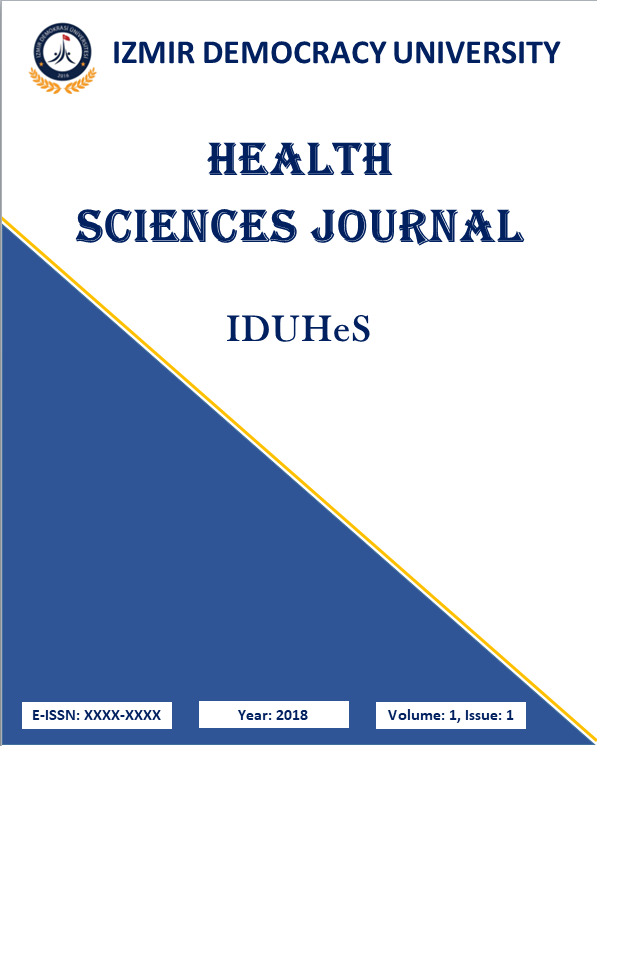DETERMINATION OF RESIDUES OF AMITRAZ AND FLUVALINATE IN HONEY SAMPLES COLLECTED FROM ÇUKUROVA DISTRICT
Amitraz, Fluvalinate, Honey, Residue, Amitraz, Fluvalinate, Honey, Residue
DETERMINATION OF RESIDUES OF AMITRAZ AND FLUVALINATE IN HONEY SAMPLES COLLECTED FROM ÇUKUROVA DISTRICT
Amitraz, Fluvalinate, Honey, Residue,
___
- Referans1 Atienza, J., Jimenez, J. J., Bernal, J. L., Martin, M. T. (1993). Supercritical fluid extraction of fluvalinate residues in honey. Determination by high performance liquid chromatography. J Chromatogr Biomed Appl, 655, 95-99.
- Referans2 Anonim (1987). Teknik arıcılık. 10:7; 11:4; 13:2.
- Referans3 Belda, F., Fernandez, F. (1989). Amitraz residues in honey. Vida Epicola, 35, 58-59.
- Referans4 Bogdanov, S. (2006). Contaminants of bee products. Apidologie, 37, 1-18.
- Referans5 Chauzat, M. P., Faucon, J. P. (2007). Pesticide residues in beeswax samples collected from honey bee colonies (Apis mellifera L.) in France. Pest Manag Sci, 63, 1100-1106.
- Referans6 Çobanoğlu, S., Tüze, Ş. (2008). Determination of amitraz (varroaset) residue in honey by high performance liquid chromatograhy (HPLC). Tarım Bilimleri Dergisi, 14, 169-174.
- Referans7 EMEA (1999). Committee for veterinary medicinal products. Amitraz (Bees). Summary report 2. EMEA/MRL/572/99-FINAL. http://www.ema.europa.eu/pdfs/vet/mrls/057299en.pdf.
- Referans8 Depaoli, M., Barbina, M. (1992). Flumetrin residues in honey. Pestic Sci, 34, 61-63.
- Referans9 Derebaşı, E., Bulut, G., Col, M., Güney, F., Yaşar, N., Ertürk, Ö. (2014). Physicochemical and residue analysis of honey from black sea region of Turkey. Fresenius Environmental Bulletin, 23, 10-17.
- Referans10 Er, E. (1994). Varroa mücadelesinde kullanılan bazı tarımsal ilaç kalıntılarının Ege ve Akdeniz Bölgesi ballarındaki kalıntılarının araştırılması. Yüksek Lisans Tezi, Ege Üniversitesi Fen Bilimleri Enstitüsü.
- Referans11 Faucon, J. P., Flamini, C. (1990). Fluvalinte residues in beewax and honey. Bull Group Tech Vet, 3, 57-58.
- Referans12 Hammerling, C. (1987). Pesticides control in honeys by GC/ECD. Nahrung, 31, 385.
- Referans13 Hammerling, C., Augustyniak, B., Risto, C. (1991). Gesammt-amitraz rückstande in bienenhonigen. Die Nahrung, 35, 1047-1052.
- Referans14 Hernández-Rodríguez, C. S., Moreno-Martí, S., Almecija, G., Christmon, K., Johnson, J. D., Ventelon, M., vanEngelsdorp, D., Cook, S. C., González-Cabrera, J. (2022). Resistance to amitraz in the parasitic honey bee mite Varroa destructor is associated with mutations in the β-adrenergic-like octopamine receptor. J Pest Sci, 95, 1179-1195.
- Referans15 Herrera, Lopez, S., Lozano, A., Sosa, A., Hernando, M. D. (2016). Screening of pesticide residues in honeybee wax comb by LC-ESI-MS/MS. A pilot study. Chemosphere, 163, 44-53.
- Referans16 Karazafiris, E., Tananaki, C., Thrasyvoulou, A., Menkissoglu-Spiroudi, U. (2011). Pesticide residues in bee products. In: Pesticides in the modern world – risks and benefits. Margarita Stoytcheva (ed.), ISBN: 978-953-307-458-0, In Tech. Available from: http://www.intechopen.com/books/pesticides-in-the-modern-world-risks-and-benefits/pesticide-residues-in-bee-products.
- Referans17 Kubik, M., Nowacki, J., Michalczuk, L., Pidek, A., Marcinkowski, J. (1995). Penetration of fluvalinate into bee products. J Fruit Ornam Plant Res, 3, 13-22.
- Referans18 Lambert, O., Piroux, M., Puyo, S., Thorin, C., L’Hostis, M., Wiest, L., Bulete, A., Delbac, F., Pouliquen, H. (2013). Widespread occurrence of chemical residues in beehive matrices from apiaries located in different landscapes of Western France. PLoS One, 8, e67007.
- Referans19 Lozano, A., Hernando, M. D., Uclés, S., Hakme, E., Fernández-Alba, A. R. (2019). Identification and measurement of veterinary drug residues in beehive products. Food Chem, 274, 61-70.
- Referans20 Mullin, C. A., Frazier, M., Frazier, J. L., Ashcraft, S., Simonds, R., vanEngelsdorp, D., Pettis, J. S. (2010). High levels of miticides and agrochemicals in North American apiaries: Implications for honey bee health. PLoS One, 5, e9754.
- Referans21 Oldroyd, B. P. (2007). What's killing American honey bees? PLoS Biol, 5, e168.
- Referans22 Ohba, Y., Nakajima, T., Kanda, M., Hayashi, H., Matsushima, Y., Nakagawa, Y., Koike, H., Nagano, C., Sekimura, K., Otsuka, K., Sasamto, T., Hashimoto, T. (2018). Simultaneous determination of nine acaricides and two metabolites in comb honey by LC/MS/MS. Food Addit Contam Part A Chem Anal Control Expo Risk Assess, 35, 2375-2386.
- Referans23 Ohba, Y., Nakajima, T., Kanda, M., Hayashi, H., Nagano, C., Yoshikawa, S., Matsushima, Y., Koike, H., Hayashi, M., Otsuka, K., Sasamoto, T. (2022). Surveillance of acaricides in honey. Shokuhin Eiseigaku Zasshi, 63, 92-96.
- Referans24 Ravoet, J., Reybroeck, W., de Graaf, D. C. (2015). Pesticides for apicultural and/or agricultural application found in Belgian honey bee wax combs. Bull Environ Contam Toxicol, 94, 543-548.
- Referans25 Sgolastra, F., Hinarejos, S., Pitts-Singer, T. L., Boyle, N. K., Joseph, T., Lūckmann, J., Raine, N. E., Singh, R., Williams, N. M., Bosch, J. (2019). Pesticide exposure assessment paradigm for solitary bees. Environ Entomol, 48, 22-35.
- Referans26 Tette, P. A., Rocha Guidi, L., Gloria, M. B., Fernandes, C. (2016). Pesticides in honey: A review on chromatographic analytical methods. Talanta, 149, 124-141.
- Referans27 Tihelka, E. (2018). Effects of synthetic and organic acaricides on honey bee health: a review. Slov Vet Res, 55(3), 114-140.
- Referans28 Tsvetkova, T., Peneva, V., Grigorova, D. (1981). Residual pesticides in honey. Vet Med Nauki, 18, 93-98.
- Referans29 Wallner, K. (1999). Varroacides and their residues in bee products. Apidologie, 30, 235-248.
- Referans30 Wiest, L., Bulete, A., Giroud, B., Fratta, C., Amic, S., Lambert, O., Pouliquen, H., Arnaudguilhem, C. (2011). Multi-residue analysis of 80 environmental contaminants in honeys, honeybees and pollens by one extraction procedure followed by liquid and gas chromatography coupled with mass spectrometric detection. J Chromatogr A, 1218, 5743-5736.
- Yayın Aralığı: Yılda 3 Sayı
- Başlangıç: 2018
- Yayıncı: İzmir Demokrasi Üniversitesi
İhsan KISADERE, Hakan TAVŞANLI, Mehmet Faruk AYDIN, Özkan DEMİRBAŞ
KORBİNİAN BRODMANN’NIN NÖROBİLİME KATKILARI VE SEREBRAL KORTEKS LOKALİZASYON ÇALIŞMALARI
Beyza Aslı BİLSEL, Ebru DURUSOY
Nihan ÇAKIR BİÇER, Dilşat BAŞ, Selda SEÇKİNER, Meryem KAHRIMAN, Murat BAŞ
COVID-19 PANDEMİSİNDE KADIN OLMAK: KARANTİNA VE AİLE İÇİ ŞİDDET
Zehra ACAR, Nevin HOTUN ŞAHİN, Fatma Selin ASLAN KİBAR, İrem HÜNERLİ, Nurbanu ÇAKIR
COVİD 19 Pandemi Döneminde Aile Planlaması Hizmetleri Nasıl Etkilendi?
Sevda KARAKAŞ, Nur Bahar KURU AKTÜRK, Beyzanur İŞBAY
LİDERLİK UYGULAMALARININ EBE VE HEMŞİRELERİN KARİYER GELİŞTİRMELERİNE ETKİSİNİN İNCELENMESİ
Ayşegül DÖNMEZ, Şeyma EMİRALİOĞLU, Ali YAVUZ
ZOOM TÜKENMİŞLİK VE YORGUNLUK ÖLÇEĞİNİN TÜRKÇE VERSİYONU: GEÇERLİK VE GÜVENİRLİK ÇALIŞMASI
